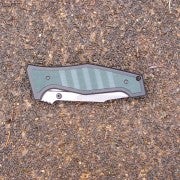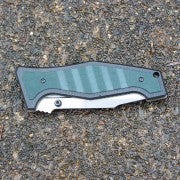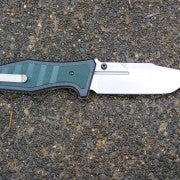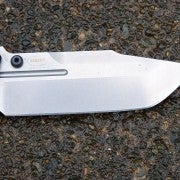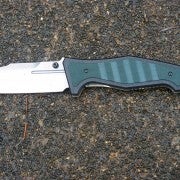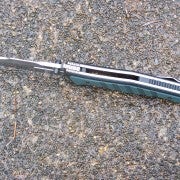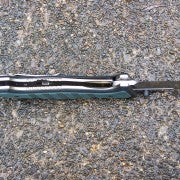Review: Benchmade Vicar
Pat Cascio 12.03.15
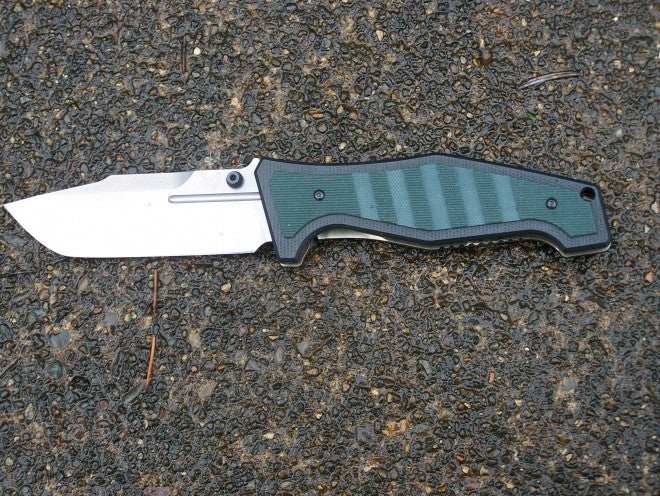
I don’t recall when I was more anxious to get a new knife sample from Benchmade Knives than I was when I was privy to a new design by Shane Sibert, a custom knife maker. It was June 2014, and I was sworn to secrecy about the new “Vicar” from Benchmade, anticipated to be released in August 2014. However, several design changes were made to the complex blade grind, and the release of the Vicar didn’t actually happen until the second week of February 2015. I was fortunate in that I received the first writer sample for testing and review.
I know that Derrick Lau, my contact at Benchmade, was probably afraid to open any e-mails from me for fear of yet another threat that my cousin Vito would come in from Chicago to break some legs at Benchmade if I didn’t get my Vicar sample soon. Derrick, being the great guy he is, took it all in stride and kept assuring me that it would be worth the wait.
My Vicar sample finally arrived, and I have to agree with Lau, it was well worth the wait.
The Vicar boasts a S30V 3.86″ long blade, with a blade thickness of 0.162″. That’s thick for a folder, but then again, Shane Sibert is known for his robust folders. The blade was hardened 58-60 on the Rockwell scale, and the knife weights a hefty 6.62-ounces. Pocket clip is designed for tip-up carry of the blade, has a Titanium locking liner, and the overall length is 8.86-inches when opened (closed is 5-inches).
Handle material is two different layers of G10, with the inner scales being black and the outer G10 handle scales green with grooves milled into them for a 3-D look. Speaking of the handle, the design is outstanding. It fits my hand perfectly. There are “friction” grooves milled into the top front of the handle, just perfect for thumb placement in the fencing position when holding the knife. We also have friction cuts on the bottom rear of the handle scales. This hummer won’t slip out of your hand under harsh conditions. The top rear of the handle has what I call alligator ridges on it; you have to see it and feel it, to really appreciate how much these ridges help secure the Vicar in your hand. Nice touch!
Looking at the blade design itself, I can see where the grind was difficult to duplicate on the CNC machines. It’s not as easy as one might think to design a program to cut a blade. Sure, when made by hand as custom knife makers do, it’s a bit easier, but when programming a CNC machine to duplicate the various grinds on a blade it takes some serious calculations with lots of trial and error.
Needless to say, the Vicar came scary sharp out of the box, as is always the case with Benchmade blades. We also have a lifetime limited warranty on the knife–outstanding! The blade had a dullish polish to it, and I understand that. S30V powdered stainless steel is a bit difficult and very time consuming to get a high polish on the steel blade. However, I suspect that the dullish, non-reflective finish on the blade is a design characteristic aspect of the blade design itself.
Cutting With the Vicar
I put the Vicar through all manner of cutting tasks, including in the kitchen and on the usual UPS/FedEx packages that arrive almost daily at my digs that need to be opened. I used the Vicar for “stabbing” into stacked cardboard boxes, and it easily stabbed to the handle. I think the Vicar is a much better “slasher” than it is a “stabber” though. This is because of the high centered tip of the blade, meaning it is above the center line of the blade. I think the only place where the Vicar might possibly come up short would be field dressing game. With the point being high on the blade and the modified Tanto design, I can think of better folders designed for field dressing game. However, the knife worked great in the kitchen when it came time to slice meat.
So, where does the new Benchmade Vicar fit in? First of all, it’s an outstanding EDC (Every Day Carry) folder, and a very stout one, at that. I know a lot of folks like a light-weight EDC folder to carry in their pocket. I prefer something more robust, something that has some serious heft to it. Secondly, I see the Vicar as a great self-defense folder, something many in the military might want to consider, especially since most knife fights per se involve slashing instead of stabbing techniques. Third, the Vicar is just a thing of beauty and one folder you’ll want to add to your Benchmade collection.
Right now, the Vicar is being shipped in very limited numbers. Requests are coming in faster than Benchmade can fill the orders. However, the wait is worth it. I waited almost 8-months for this baby to arrive, and it was well worth it. Quality never comes cheap, to be sure. You can buy cheaper knives, but you’ll buy cheaper knives over and over again. Quality is something you buy but once. The Vicar retails for $300.00, and it’s worth every red cent if you ask me. It screams “custom made” in my book. Take a close look at the new Benchmade Vicar, I think you’ll like what you see.
